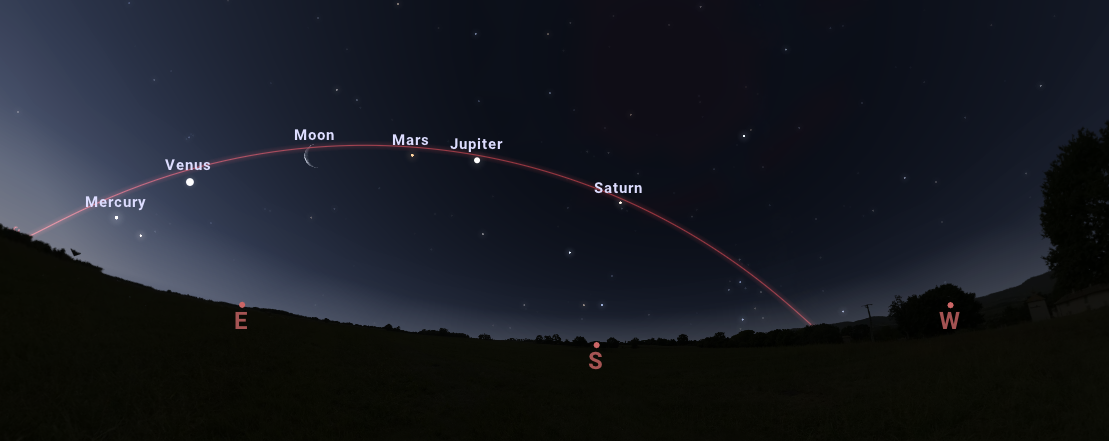The Summer Planet Parade

The Museum of Science & History Selects Local Projects as Exhibit Designer for MOSH Genesis Project
June 7, 2022
Hurricanes: Wet & Wild Weather
June 17, 2022Have you been looking up (outside)? From left to right, Mercury, Venus, Mars, Jupiter, and Saturn are visible to the naked eye during the month of June.
How does the planet alignment occur?
The spectacular occurrence is simply the result of time moving forward. As the planets orbit the Sun, they eventually catch up to one another. As they pass each other, the planets appear to line up from our viewpoint on Earth because they are traveling on the same plane of the solar system—the ecliptic. The grouping together in the sky doesn’t last very long, however, because each planet travels at different speeds depending on how far it is from the sun.
How often do planetary alignments occur?
Although the celestial worlds appear close together in the sky, the planets are still millions of miles apart from each other. This five-planet alignment occurs about every 18 years, with the next grouping in 2040. To put things into perspective of time and distance, it takes Earth one year to orbit the Sun, whereas Mercury completes its orbit in 88 days. The fifth planet in the alignment, Saturn, takes 29.46 years to orbit the Sun. While 18 years before the next five-planet alignment sounds like a long time to us, it is no time at all to the 13.8 billion-year-old universe.
Eyeing the planet parade
A general rule of thumb to keep in mind: stars twinkle; planets do not. The highest visibility time is just before dawn. Look east. The waning crescent moon will be visible between Venus and Mars. In Jacksonville, the most optimal viewing location is at the beaches, where you will have a clear view over the horizon. The planet parade will be visible into early July.
Helpful apps for sky watching:
- Sky Tonight
- Night Sky (IOS only)
- Star Walk 2
- Sky Map (Android only)


